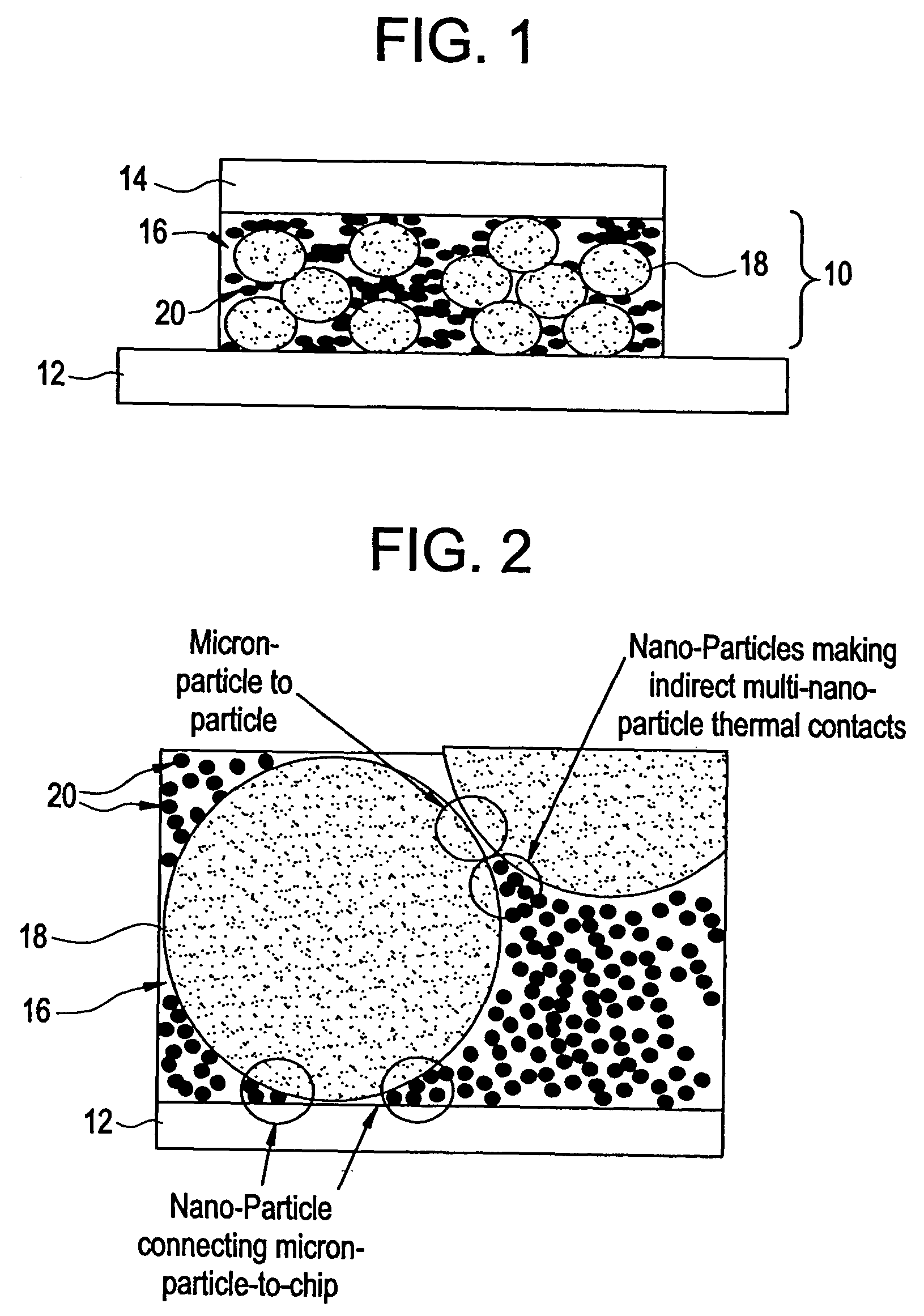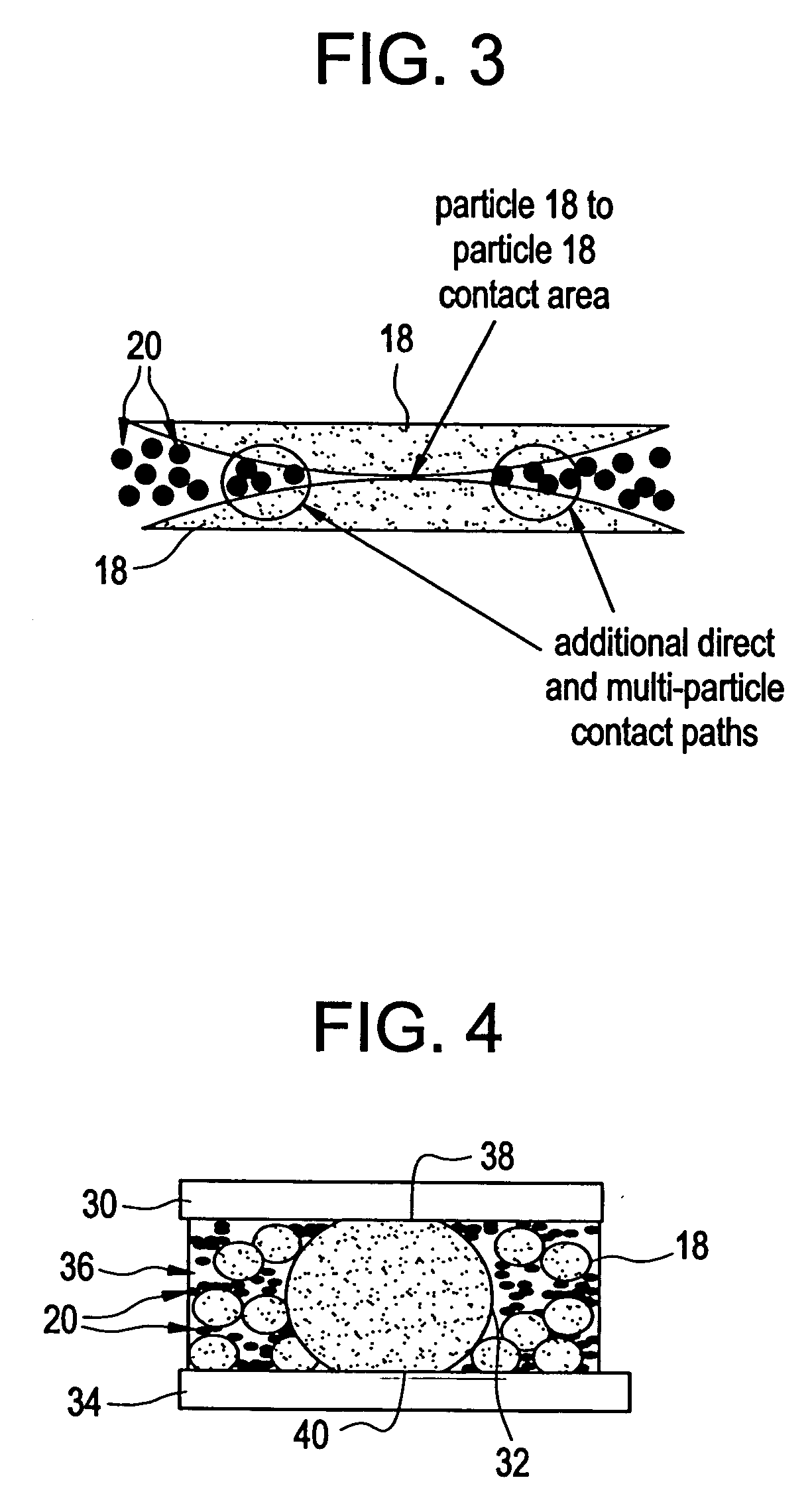Thermal conductive material utilizing electrically conductive nanoparticles
a technology of electrically conductive nanoparticles and thermal conductive materials, which is applied in the direction of non-metal conductors, semiconductor/solid-state device details, lighting and heating apparatus, etc., can solve the problems of reducing the effectiveness and value of the heat sink as a thermal management device, reducing the ability to transfer heat through the interface between the surfaces, and permanent damage to electrical components, etc., to achieve the effect of increasing the efficiency of heat transfer
- Summary
- Abstract
- Description
- Claims
- Application Information
AI Technical Summary
Benefits of technology
Problems solved by technology
Method used
Image
Examples
Embodiment Construction
[0018] The present disclosure provides a thermal interface composition containing both non-electrically conductive micron-sized filler particles and electrically conductive nanoparticles in a polymer matrix. The electrically conductive nanoparticles are used to increase the thermal conductivity of the thermal interface composition. As used herein, a “thermal interface composition” is any material useful in conducting heat away from high temperature areas in an electrical system and can include a thermal interface material (“TIM”) placed between a heat sink and a heat generating component of an electrical device or an underfill material utilized in integrated circuit packages, i.e., chips, to fill gaps between the chip and substrate and improve fatigue life of solder used in the chips by removing heat generated during thermal cycling. The present disclosure also provides a thermal interface composition containing electrically conductive nanoparticles in a polymer matrix without non-e...
PUM
| Property | Measurement | Unit |
|---|---|---|
| size | aaaaa | aaaaa |
| size | aaaaa | aaaaa |
| thickness | aaaaa | aaaaa |
Abstract
Description
Claims
Application Information
 Login to View More
Login to View More - R&D
- Intellectual Property
- Life Sciences
- Materials
- Tech Scout
- Unparalleled Data Quality
- Higher Quality Content
- 60% Fewer Hallucinations
Browse by: Latest US Patents, China's latest patents, Technical Efficacy Thesaurus, Application Domain, Technology Topic, Popular Technical Reports.
© 2025 PatSnap. All rights reserved.Legal|Privacy policy|Modern Slavery Act Transparency Statement|Sitemap|About US| Contact US: help@patsnap.com



